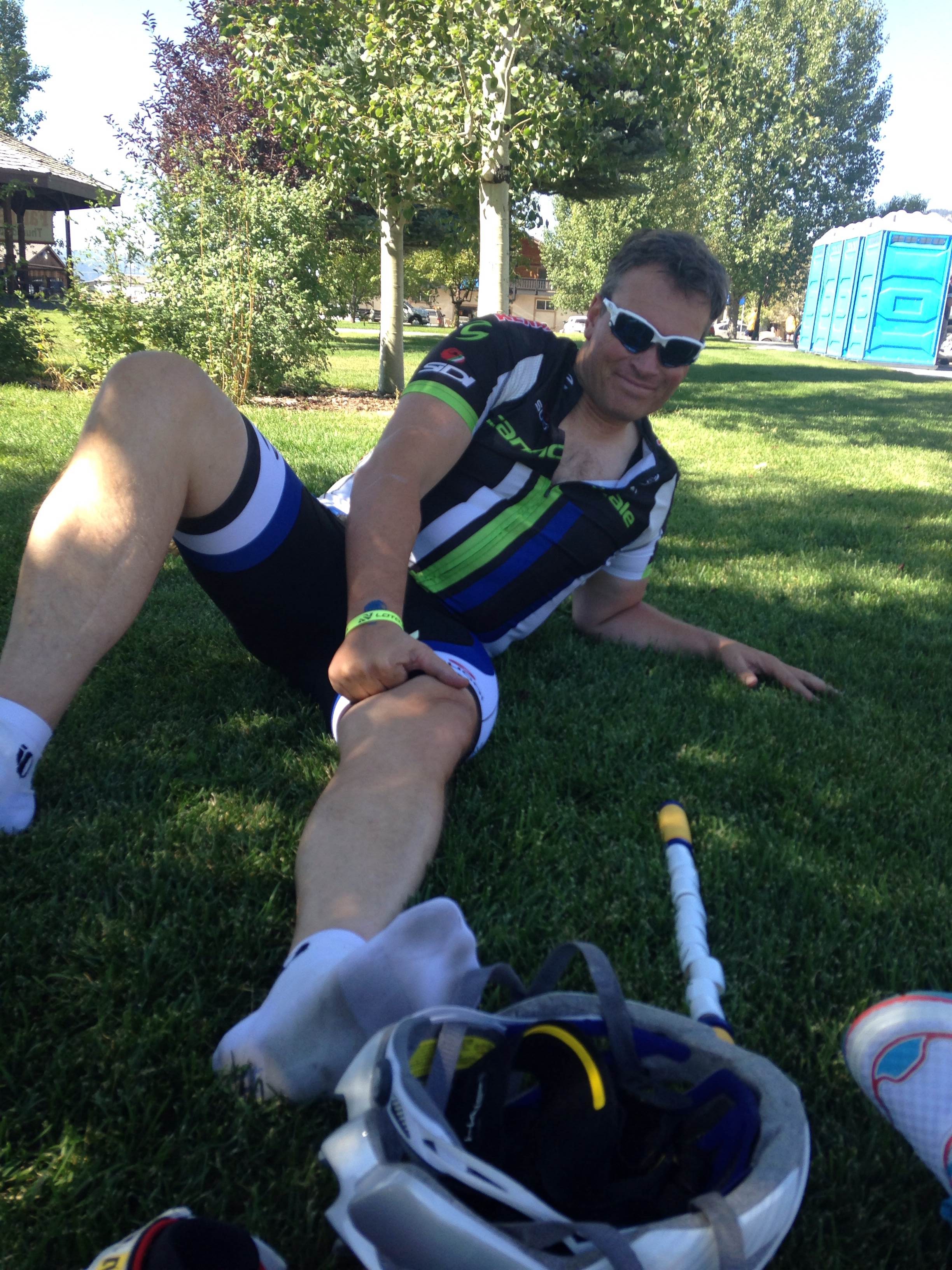LOTOJA: 200-mile bicycle race geared for safety
September 21st, 2015 Posted in HealthThere are a lot of things cyclists have to worry about in a race that you’d never imagine as a spectator. The shape their bike is in, if they trained hard enough, whether they have efficient energy, how close they’re riding to the bike in front of them, to name a few.

COLLECTING CRAMPS — Riders in the annual LOTOJA bicycle race hit the road.
The 200+ mile bike ride from Logan to Jackson – or LOTOJA in shorthand – took place this past weekend. And according to the race director, Brent Chambers, safety is the number one priority for everyone involved.
“We work with the department of transportation, and law enforcement as we plan the route,” Chambers said. “And from year to year we find things that need to be tweaked. Whether it’s because of congestion, or maybe road construction, we work to make the route as safe as possible.”
Chambers said they have a route for the cyclists, and a route for the support vehicles. Vehicles are not allowed to travel on the same road as the bikers — with the exception of Hwy. 91 — until they get in to Star Valley.
“The fourth leg is the one leg where cars are allowed to be right there next to you,” said fifth time racer Jerry Young. “That’s kind of spooky because there’s not much shoulder, so you’re limited as to where you can go.”
Young is thankful that they get the road to themselves the majority of the race. He recently had an incident while training for LOTOJA where a car pulled out in front of him and as he tried to avoid hitting the car he laid down his bike and slid next to the car.
“Fortunately she stopped,” Young said. “Otherwise her front wheel would have gone over at least my bike.”
Young only suffered a few scrapes and bruises from the crash, but he admitted he gets nervous whenever he thinks about getting on his bike.
“It still bothers me,” Young said. “It makes me a little bit nervous in anticipation of the race, I just try not to think about it. It doesn’t really hit me though until I get on the bike.”
Accidents are just a part of bike racing, said Chambers. The most common injury he sees is road rash, and clavicle breaks. Usually when a biker goes down it’s because he or she got too close to the racer in front of them and touched their wheel, which then throws them off balance.
He does remember a time a few years ago in Afton where a biker ran a stop sign, t-boned a car and broke his hip. And not to mention the time another cyclist t-boned a deer.
“That was an interesting accident,” said Chambers.
In 2012, there was even a fatality when a rider hit a pothole on a bridge north of Hoback Junction in Wyoming and went over the side of the bridge.
“The cyclist was riding with a group of about five or six guys,” said Chambers. “He ended up losing control of his bike and going over the bridge. He landed in the river but landed towards the bank in about 12 inches of water. It was the first time in LOTOJA history that there was a fatality, and it was by far the most difficult day of my professional career.”

AFTER THE RACE, cyclist Kyle Morris works cramps out of his legs.
Chambers said his biggest stressor before race day are the things he can’t control, like these bike accidents. He said he can put in time year round to make the race as safe as possible, but he still can’t control certain variables.
“You can’t control someone’s health,” he said. “You can’t control mechanicals, and you can’t control if they ride too close to the rider in front of them. A couple years ago we had a guy have a stroke riding his bike, he was 45, you can’t control things like that. I just do the best I can to try to address those issues the best I can.”
Some racers may not train as hard as they should, and find their bodies can’t quite make it without a lot of pain. First-time racer Kyle Morris said if he did it again he’d train a lot harder.
“That last 46 miles was grueling,” he said.” Just because you’re so tired and it’s a gradual uphill.”
He said the last six miles consisted of fighting cramping in both legs.
“You know those Charley horses that just paralyze your whole leg,” he said. “That’s what was happening.”
After the race he proceeded to the nearest stream to ice his tired muscles.
To help assist and prevent any harm that could come upon the racers there are 200 volunteers on the course to help in a number of ways. There are volunteers that are stationary, and volunteers that are mobile which they call “neutral support.” These people are in vehicles that follow the race route. There are also motorcycle marshals to help ensure the cyclists have safe passage, are following the rules of the road, and race guidelines.
“There were people at stands with cold water bottles they would hand out to the bikers,” Morris said. “Then when we were done with it we could just throw it on the ground and people would pick them up. At some points that water was worth the price of gold, and they just handed it to you. We were well taken care of, and I felt safe.”
TP
Tags: bicycle, Brent Chambers, Jerry Young, Kyle Morris, LOTOJA

Sorry, comments for this entry are closed at this time.